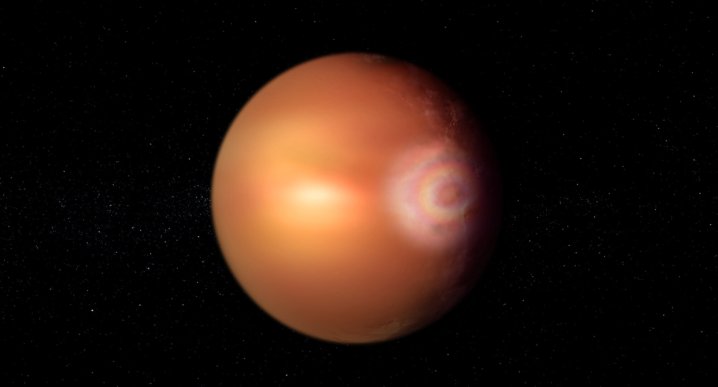Just from looking at our own solar system, we can see that planets come in a wide variety of colors — from the dusty red of Mars to the bright blues of Uranus and Neptune. Planets like Jupiter have beautiful bands of color caused by variations in the atmosphere, while it’s hard to even see the surface of Venus because its atmosphere is so thick. But there are other variations in color which planets can display, like a stunning rainbow-hued set of circular rings called a glory.
Glories are observed on Earth, and have been seen just once on another planet, Venus. But now, researchers believe they may have identified a glory on a planet outside our solar system for the first time. The extreme exoplanet WASP-76b could be host to the first known extrasolar glory, observed by the European Space Agency (ESA)’s Characterising ExOplanet Satellite (Cheops).

“There’s a reason no glory has been seen before outside our Solar System – it requires very peculiar conditions,” said lead author of the research, Olivier Demangeon of the Instituto de Astrofísica e Ciências do Espaço in a statement. “First, you need atmospheric particles that are close-to-perfectly spherical, completely uniform and stable enough to be observed over a long time. The planet’s nearby star needs to shine directly at it, with the observer – here Cheops – at just the right orientation.”
The glory effect occurs when light bounces off clouds in a planet’s atmosphere, though it’s not clear what substance the clouds could be composed of for this to happen. The clouds would need to have spherical droplets and to be stable over time.
WASP-76b is already famous as an extreme exoplanet, with an atmosphere heated to a scorching 2,000 degrees Celsius, which is so hot it rains iron there. The planet is tidally locked, meaning one side of it always faces its star and one side always faces out into space, causing a massive temperature difference between these two sides. It is also puffed up to a huge size given its mass.
Even though the planet is well studied, it’s still very hard to see details of what is happening there, as it is located over 600 light-years away. Researchers warn that it’s hard to be certain that what is being seen is truly a glory effect.
“What’s important to keep in mind is the incredible scale of what we’re witnessing,” said Matthew Standing, an ESA Research Fellow studying exoplanets. “WASP-76b is several hundred light-years away – an intensely hot gas giant planet where it likely rains molten iron. Despite the chaos, it looks like we’ve detected the potential signs of a glory. It’s an incredibly faint signal.”
The indications have exoplanet scientists intrigued, however, as they could help to shed light on this planet’s dramatic atmosphere. “Further proof is needed to say conclusively that this intriguing ‘extra light’ is a rare glory,” said Theresa Lüftinger, Project Scientist for ESA’s upcoming Ariel mission. “Follow-up observations from the NIRSPEC instrument onboard the NASA/ESA/CSA James Webb Space Telescope could do just the job. Or ESA’s upcoming Ariel mission could prove its presence. We could even find more gloriously revealing colors shining from other exoplanets.”
Editors’ Recommendations
Services Marketplace – Listings, Bookings & Reviews